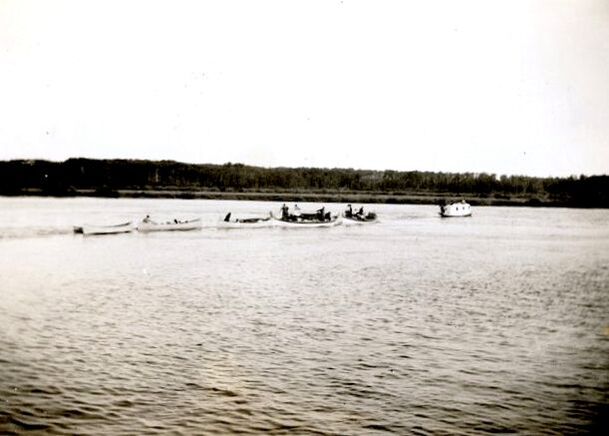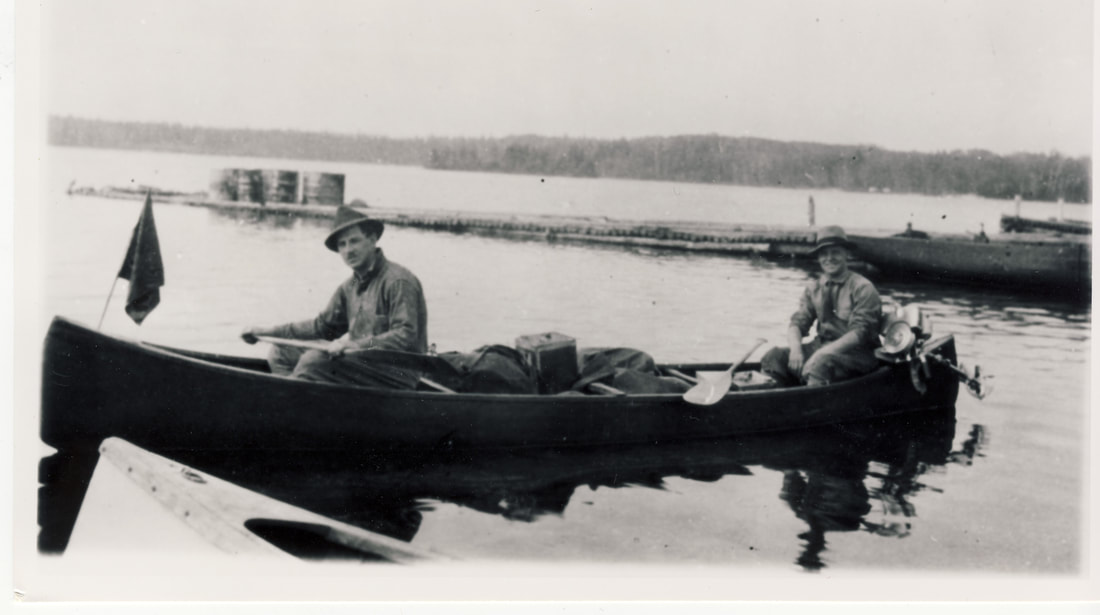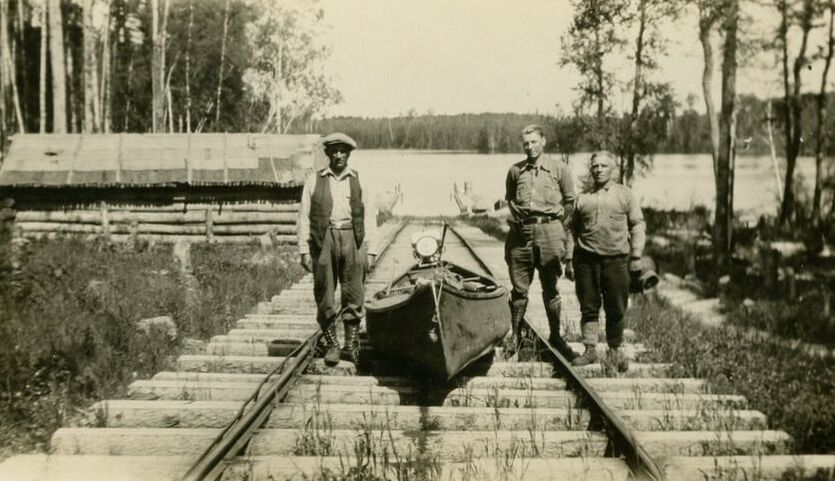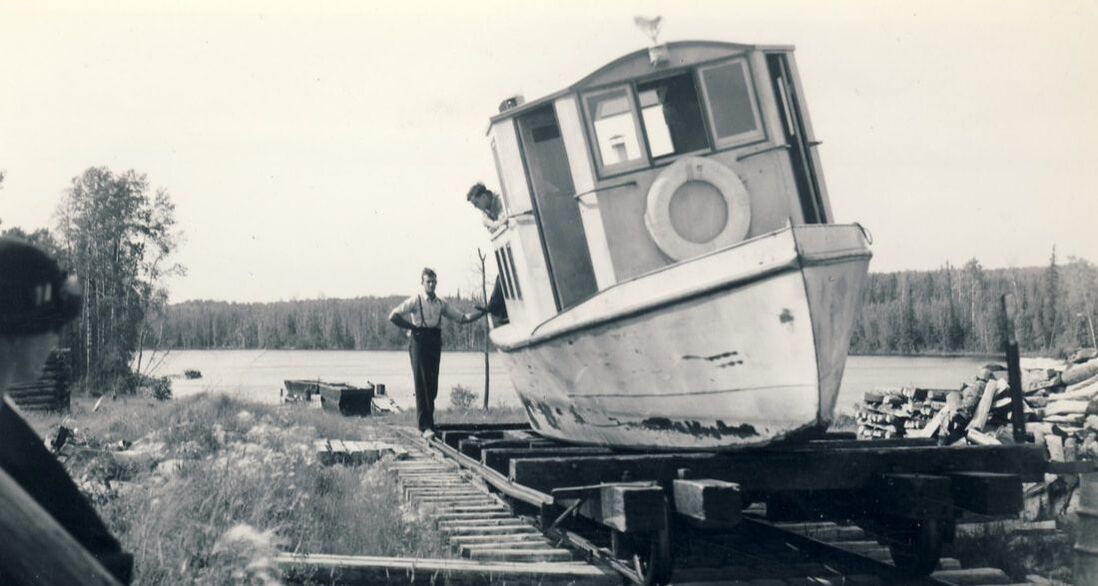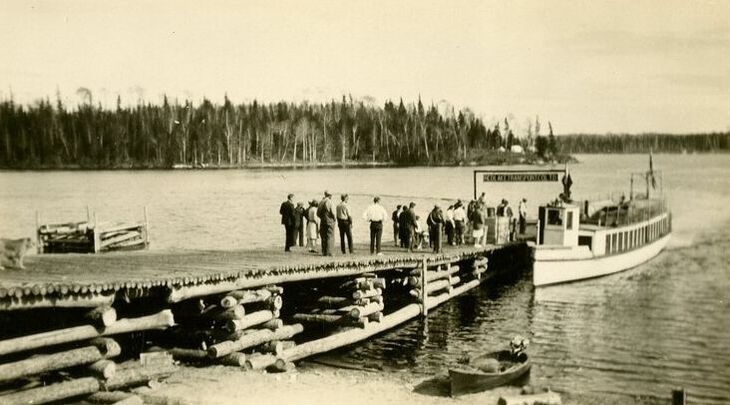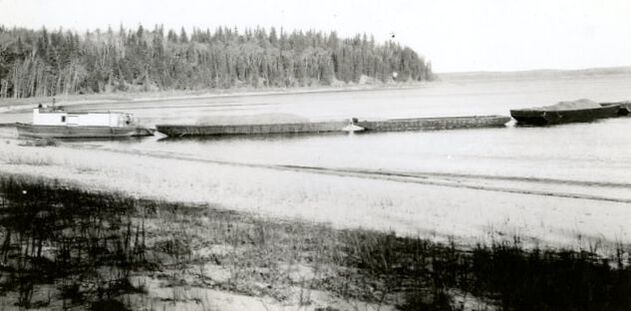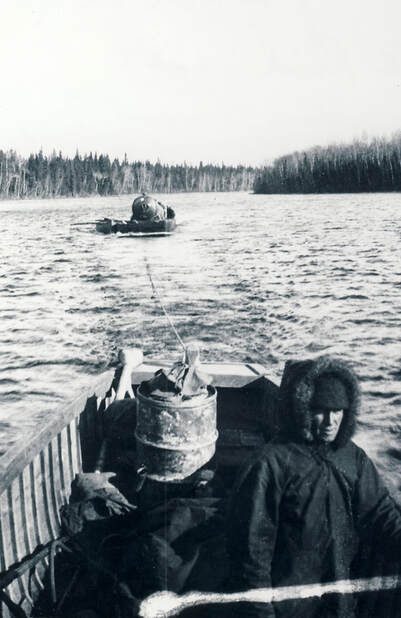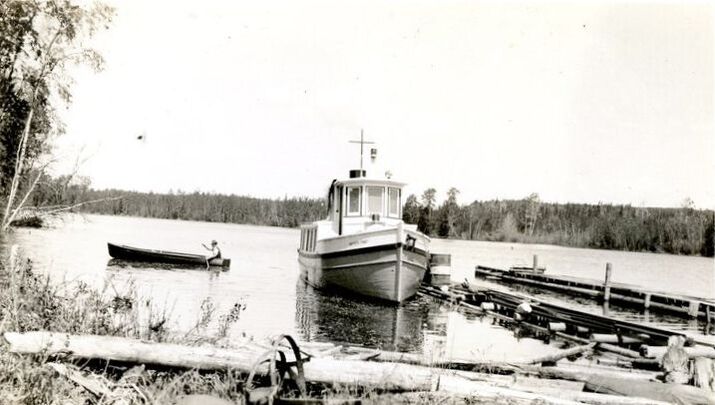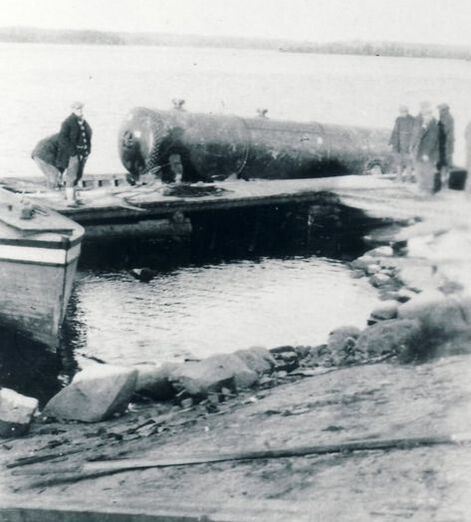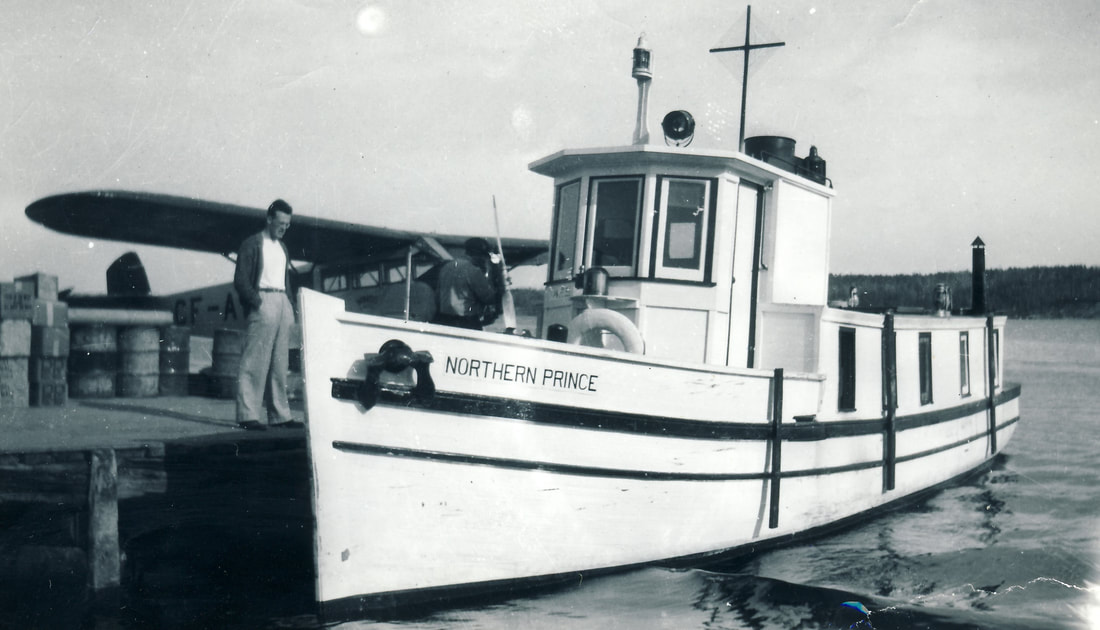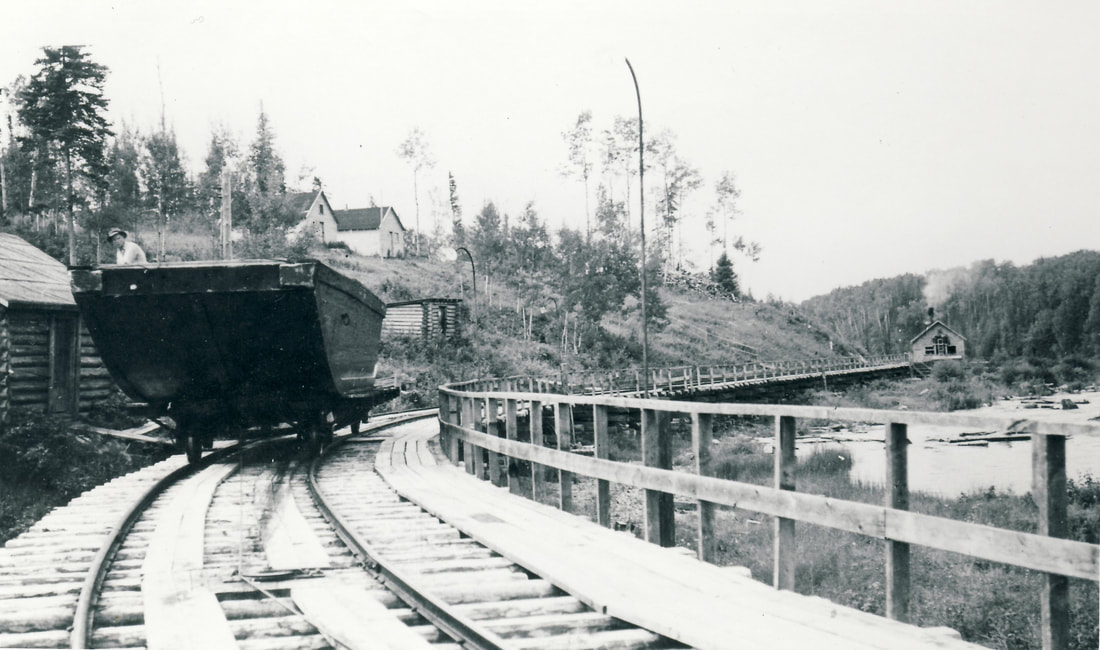Boats and Portages
Red Lake Waterway
|
The earliest form of water transportation in Red Lake was
the canoe. There were some commercial fishermen who worked on Lac Seul, but there were not many people travelling to Red Lake. After arriving at Goldpines, canoes were often the easiest way to travel as there are several portages to Red Lake. Before the gold rushes, very few people that went to the Red Lake region. The Hudson Bay Company had an outpost in Post Narrows and would transport in supplies and furs out of the area. Indigenous people lived and trapped in the area and knew the trails, but not many others recognized the area. It was not easy to get to Red Lake in the early 1920s. Findley McCullum found gold in Red Lake in 1922, but he was not able to raise money for further exploration. The Toronto-based businessmen McCallum was trying to get to invest in his property were not interested in a place was so inaccessible. The businessmen thought the cost of shipping would cut into profits too much. The area had no roads or railways into it, and the closest a large boat could get to Red Lake was Goldpines. Red Lake’s transportation companies also did not exist at this time. Ear Falls, Red Lake Transportation, 1930sNorthern Transportation or Starratt Airways and Transportation Tug Boat, Date UnkownOn the first day, the passengers would cross Lac Seul from Hudson to Goldpines. The boats would usually leave around 7 am, arriving in Goldpines at roughly 7 pm. Passengers would disembark and get a hotel room for the night. The next day, passengers left at 6 am. The passage was fundamental as the waterways were shallower, and there are 4 portages. Passengers traveled by canoe or a skiff propelled by an outboard motor to the portage in Lower Ear Falls. At Lake Pakwash, passengers crossed the lake, usually in a larger boat as the waters of Pakwash could become treacherous. After crossing Lake Pakwash, passengers would cross the portage at Snake Falls. The passengers continued through the Chukuni River waterway to Sam’s Portage and finally Snowshoe Portage. Passengers either walked across the portage or rode in a cart pulled across by horses. After crossing Snowshoe Portage, passengers would board a diesel tug and cross Gullrock Lake, Keg Lake, Two Islands Lakes to Red Lake.
This was a difficult journey. The transportation companies continued to improve their services, making portage crossings easier as well as have better boats for travel between portages. However, by the mid-1930s, air transportation had become affordable, and most people preferred flying for 1 hour rather than 2 days of rough travel. |
Water Crafts
Swing of Barges, Date UNKNOWN Red Lake, Campbell
|
The transportation companies also carried freight by water. Some of the smaller freighting companies started by using skiffs or canoes with outboard motors to pull loaded canoes. The larger companies had diesel tug boats, which were able to pull 6 scows/barges. The early barges carried 8-10 tonnes each, but the later barges could hold up to 15 tonnes each. The larger transportation companies had different barges for different types of freight. The barges were stored away from the loading docks in Hudson and would be brought to the loading dock, then loaded. After the barge was loaded, it was tied to another barge by a bridle (thick rope). After all the barges were attached to each other, they were referred to as a swing, which would be pulled across Lac Seul.
A scowman would be on the scows/barges for the entire
journey. The scowman’s job was to watch how much water was coming on board. In rough weather, the waves would be high, and the barges could fill with water. There was a hand pump to bail out the water, but one scowman stated that it was not very effective if too much water came on board. The scowman would inspect the entire swing and would move across the gunwales (sides of the barge/boat) in summer. When the weather turned cold and icy, the scowman would crawl over the freight on the barges rather than walk along the gunwales. Occasionally one or more of the barges would become damaged or gain too much water and would sink. The load was lost, but the transportation companies had insurance to cover the losses in these situations. Once the shipment arrived in Goldpines, the difficult job of crossing the portages would start. The freight would cross the same four portages at Ear Falls, Snake Falls, Sam’s and Snowshoe. At each portage, labourers would unload the freight from the scows. These would be loaded onto smaller carts pulled across the portage by teams of horses. Once over the portage, the load would be reloaded back onto scows. The process of unloading and reloading was continued at each portage. This laborious way of moving across portages could take a long time, and loads of freight could become backlogged. Mining equipment being hauled by boat, 1927-28The NORTHERN Prince Tug Boat, 1929Sam's Portage, Date UNKNOWN |

